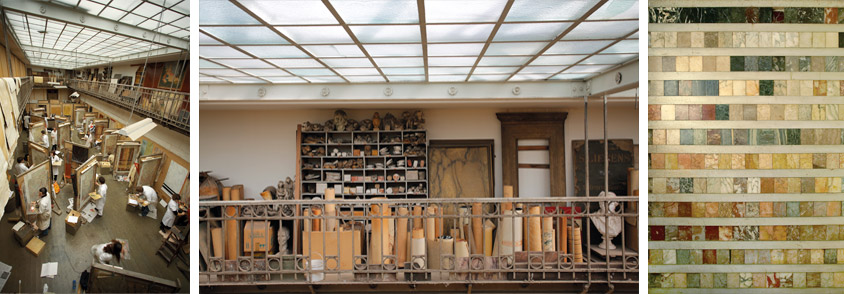
The school and its history

Located in the capital of Europe, Van der Kelen Logelain is the only school in the world to teach the traditional techniques of decorative painting.
In 1882, Pierre Logelain founded the first school to teach decorative painting in Brussels.
In 1892, Alfred Van der Kelen founded Brussels’ the second school of decorative painting, thus putting to good use the long experience he had gained in Paris. The 6-month course completes the 7-year apprenticeship the student follows with a painter-decorator.
The course offers the house painter the opportunity to master imitating wood and marble and other decorative painting techniques during a slack period. Alfred Van der Kelen created a method that was to revolutionize the craft.
The method, which is the same today, consists of intensive technical and practical training whilst developing the sense of observation and a good command of movement.
In 1902, Alfred Van der Kelen established his school at its current premises in Brussels. The building was previously used by Prosper Schryvers, the craftsman of wrought iron.
In 1951, having completed his practical training in Brussels and Paris, Alfred’s son, Clément, brought a new momentum to the school by merging it with the Logelain school. Over many years, Clément was to train his wife Denise and daughter Sylvie.
Since 1995, conscious of the historical value of the craft, Denise and Sylvie have continued to teach the art and techniques of decorative painting developed over the years since 1882.
The studio

Our studio was previously the studio of Prosper Schryvers, the craftsman of wrought iron. The house was designed in 1881 for and by Prosper Schryvers in the Flemish neo-renaissance style. The façade uses a vocabulary typical of the style: recorded stained-glass windows, a play of brick- and stone-work, pinion stepped, with a weather vane bearing Schryvers’ initials and richly adorned with brackets highlighting the virtuosity and skill of the craftsman.The building’s façade served as the craftsman’s showcase.
In the same year, at the back of the property, Schryvers built his studio-workshop, one of the most renowned in Brussels. It was covered by a glass roof in order to benefit from the best daylight.
It is in this exceptional environment that all the school’s courses have taken since 1902.
The precious archives dating back more than 100 years are conserved here as well as several collections of marble and wood.

